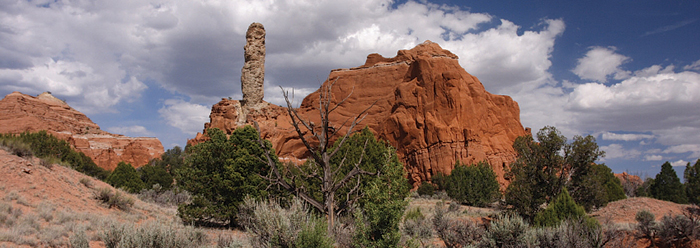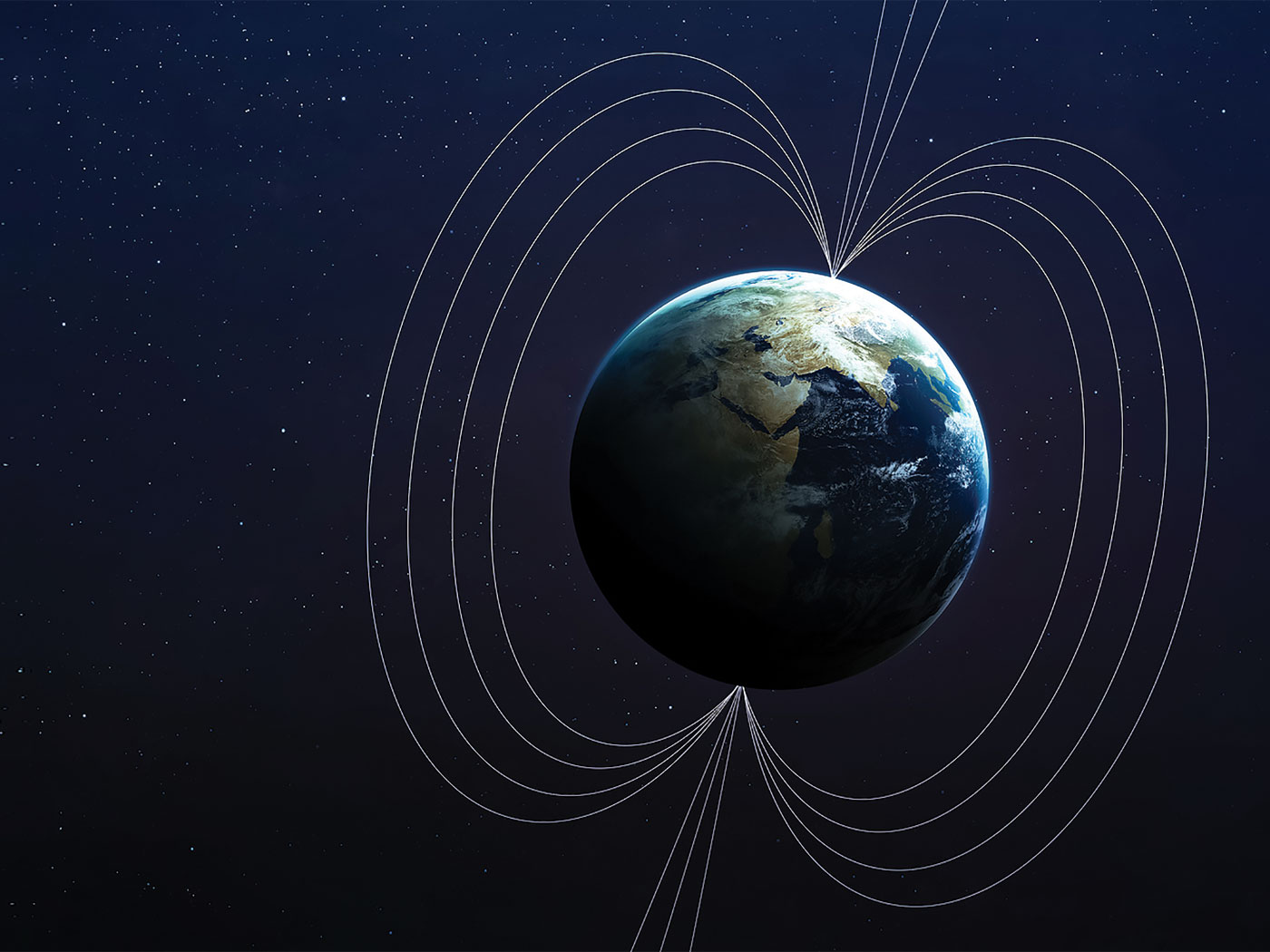A combination of "squishy sand" and seismic shaking was responsible for some of southern Utah's most spectacular landforms. Preserved in this rocky landscape are unmistakable indicators that what is today sandstone was once fluidized sand that was folded and injected into a number of remarkable structures, including dikes and pipes. Everything from extraterrestrial impacts to super-volcanoes1 has been suggested as the shaking agent. For wet sand to be mobilized demands enormous thicknesses of sedimentary strata that were once soft and water-saturated at the same time in the past. This is very odd, if these rocks accumulated over millions of years.
Rising from the floor of Kodachrome Basin, a lovely state park in southern Utah, are dozens of amazing sandstone pillars that have perplexed geologists for decades. The amphitheater-shaped basin is surrounded on three sides by 700-foot-high escarpments of Jurassic, Cretaceous, and Tertiary "layercake" strata. The pillars, which vary in thickness from a few feet to 52 feet in width, and which rise as high as 172 feet (52 m), are typically composed of fine-grained sandstone admixed with varying amounts of pebbles, cobbles, meter-sized blocks, brown shale clasts, and carbonized wood fragments.2 The pillars differ greatly in composition from the surrounding host rock, and in places it is clear that they had forcefully intruded the strata from a depth of at least 300 feet below the surface. The thickness of sedimentary rock that hosts the dozens of pipes is at least 835 feet; clearly this entire section was in a less-than-solid state for a period of more than 10 million years according to "standard" age assignments.3
Recent interest in these features from the petroleum industry has found that clusters of pipes similar to those found at Kodachrome Basin are dispersed over an 8,000-square-mile area.4 For example, in the remote and beautiful slick-rock country surrounding Lake Powell in Glen Canyon National Monument are clusters of sand pipes, including some with diameters up to 240 feet across. Liquefied sand had apparently escaped to the surface "and flowed considerable distances" in one case.5 Other pipes have weathered into cone-shaped landforms that actually resemble small volcanoes. The strata affected are the same as at Kodachrome Basin. "No single hypothesis adequately explains the origin of the pipe-like masses of deformed and fluidized sandstone in the Jurassic strata of southcentral Utah," according to one expert.6 He attributes these remarkable structures to seismic shaking produced from super-volcanoes on the continental margin.
How far will this research lead? It has recently been found that Upper Cretaceous strata may also have been deformed during the same shaking event,7 which, if true, would suggest a thousand or more feet of strata had been in a soft condition for more than 100 million years (according to standard age assignments). It would not be difficult to extend the shaken region to parts of New Mexico. A new volume devoted to "sand injectites" has been published,8 guaranteeing these will receive greater scrutiny in the future. A major portion of the sedimentary record being soft at the same time in the past does not fit well with an evolutionary timescale. It does, however, fit well with the Flood.
References
- Huuse, M. et al. 2005. Giant sandstone pipes record basin-scale liquefaction of buried dune sands in the Middle Jurassic of SE Utah. Terra Nova. 17 (1): 80-85.
- Baer, J. and R. Steed. 2000. Geology of Kodachrome Basin State Park, Kane County, Utah. In Sprinkel, D.A. et al (eds.), Geology of Utah's Parks and Monuments, Utah Geological Association Publication 28. Salt Lake City: Utah Geological Association, 449-463.
- A 1984 Loma Linda University M.S. thesis ("Geology and structure of Kodachrome Basin State Reserve and vicinity, Kane and Garfield Counties, Utah" by Dwight Hornbacher) found in one pipe cobbles that matched only with Pliocene/Pleistocene rocks, which, if true, would indicate a 150-million-year time disparity during which 1,000 feet or more of strata were unlithified.
- Huuse, Giant sandstone pipes.
- Netoff, D. 2002. Seismogenically induced fluidization of Jurassic erg sands, south-central Utah. Sedimentology. 49: 65-80.
- Ibid.
- Wolf, H. et al. 2007. Proximal seismites in the Upper Cretaceous upper and capping sandstone members of the Wahweap Formation in Grand Staircase-Escalante National Monument, Utah. Geological Society of America Abstracts with Programs. 39 (6): 631.
- Hurst, A. and J. Cartwright (eds.). 2007. Sand Injectites: Implications for Hydrocarbon Exploration and Production. Tulsa, OK: American Association of Petroleum Geologists.
* Mr. Hoesch is Research Assistant in Geology.
Cite this article: Hoesch, W. 2008. Sand Injectites. Acts & Facts. 37 (5): 14.






















